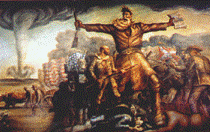History, Department of

James A. Rawley Graduate Conference in the Humanities
Date of this Version
April 2008
Document Type
Article
Abstract
Much has been written about the atomic bombings of Hiroshima and Nagasaki, however, an element often overlooked in the history of these events is the way in which an official narrative of them was created in the minds of the American public. This paper examines how this official narrative and consequently memory of the bombings was formed. To do this newspaper articles were analyzed from the first published reports of the bombings in the American press up to recent stories regarding the bombings. Through the analysis of these reports it becomes clear that American memory of the bombings have three elements attached to it. The first being that Japan would not surrender, secondly the bombs saved lives, and finally Japan had started the war with the attack on Pearl Harbor. What makes these elements interesting is that each in some form or another was reported in the newspapers analyzed in this essay. The ultimate conclusion of the essay is that through various press releases and speeches Henry Stimson and Harry Truman were able to effectively shape the way in which Americans remember the atomic bombings of Hiroshima and Nagasaki. This then adds to the historical understanding not only of the events themselves, but also to how and why people remember.


Comments
Paper presented at the 3rd Annual James A. Rawley Conference in the Humanities — Imagining Communities: People, Places, Meanings. Lincoln, Nebraska, April 12, 2008. Sponsored by the University of Nebraska–Lincoln History Graduate Students’ Association. Copyright © 2008 Michael Mishler.